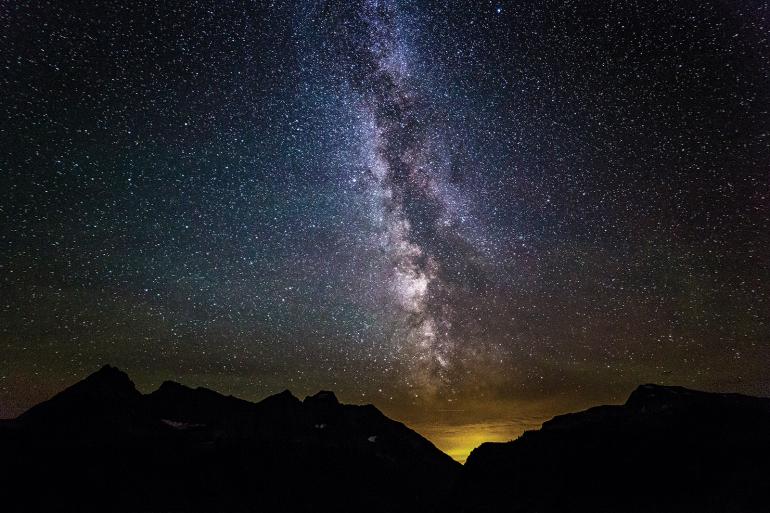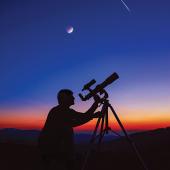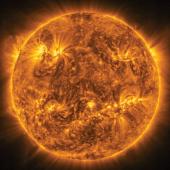Tales of the Milky Way.
Summer nights around a wilderness campfire are times for stories; it’s been true for all the ages of humanity, and the starry sky above the dark pines has always been an endless source of storytelling material.
If you glance up this summer from an even semi-wilderness campfire and it looks as though the smoke from your fire is trailing across the sky, you’re probably looking at the luminous band of the Milky Way. And if you’re looking for stories, you’ve just found a wellspring.
To view this storied stretch of faint radiance, find a dark, clear sky away from city lights. The best dates will be in the week or so around the time of new moon, when there’s no (or little) moonlight in the sky to wash it out. This year, that means late June, late July, and late August. It should be dark enough in June by 11pm (summer daylight being long) to find the Milky Way arching across the eastern sky, rising to overhead by the wee hours. As summer progresses, the Milky Way will be higher at nightfall and it will get darker earlier.
As for the stories, you have a wide spectrum from which to choose, according to taste. Looking for something grisly? Try the ancient Babylonians. In their mythos, the storm god Marduk fought with Tiamat, the dragon-like primordial goddess of the sea and the personification of chaos. He slew her, then divided her body in two to form the heavens and the Earth, setting her great tail in the sky as the Milky Way.
Like a good soap opera? In Greek mythology, Zeus desired to make his illegitimate son Heracles (Hercules) immortal like the gods. When his cheated-upon wife Hera was sleeping, he placed the infant at her breast to suckle the milk of immortality, but Hera awoke and pushed the baby away. The spilled milk splashed across the sky to create what the Romans called Via Lactea—the Milky Way.
Want an object lesson? Among the Cherokee, the story is told of a giant dog found pilfering the village’s stores of cornmeal at night. So the people hid in waiting, and when the dog came back and began to feed, they rose up with such a noise that the frightened dog jumped into the sky and ran across it, trailing cornmeal from its jaws. The path was called “the way the dog ran”—the Milky Way.
As summer progresses, the Milky Way will be higher at nightfall and it will get darker earlier.
How about something more spiritual? Among the Oglala and Lakota Sioux and the Cheyenne, the Milky Way was the Spirit Path—the way departed souls traveled to reach the afterlife. The stars twinkling along its stretch were flickering campfires set by those who were making the journey.
Scientific? In this case, the Milky Way is our edge-on view of our mostly flat, pancake-shaped galaxy—from the inside. It encircles the sky, but the brightest part we see in summer. Scientists have found that our galaxy is a loose spiral of stars, gas, and dust wound around a bulging, slightly barred center. We’re actually tucked into the inner edge of a minor spiral arm between the two major arms, about 27,000 light years out from the center, which lies in the direction of the constellation Sagittarius drifting along the southern horizon on summer nights. What lies in the center? A gigantic black hole that grows by stuffing itself with stars and gas, but which presently is “quiet”—it’s not drawing in very much material, taking a little break from its endless lunch.
Bring your binoculars and you can take your own journey along this starry road in the sky. The faint radiance will transform into endless star fields, clotted with tiny (distant) star clusters and gas clouds, especially in the direction of Sagittarius. Emptier stretches (“dark lanes”) reveal where intervening dust clouds are blocking the view of stars beyond.
It’s a journey worth taking—with many tales worth telling—as we look up to connect with the larger universe on the balmy nights of summer.
Jim Manning is the former executive director of the Astronomical Society of the Pacific. He lives in Bozeman.











